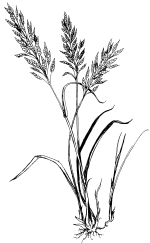
1885-1940: Railroad and Markets
In 1885, the railroad came to Dennison and Nerstrand. The Chicago Great Western Railroad connected towns in southern Minnesota with markets from Saint Paul to Chicago. The railroad bed runs through what today is the Engeseth-Rinde site and forms the eastern boundary of the Koester Prairie site.
At the same time, the villages of Dennison and Nerstrand were founded.


Route of the Chicago Great Western Railroad (1897).

Wildlife Management Area site in sections 25-26. Rail line on eastern edge.

About Dennison and Nerstrand
Morris P. Dennison was an early white settler on the land now known as the village of Dennison. Originally from Vermont, Morrison P. Dennison arrived at Minnesota in 1849, and brought his family over in 1856. He built a log house in what later became the center of the village. While the railroad line was being built in 1884, the village was platted as Spring Creek, then later given the name Dennison. It was incorporated as a village in 1904.
Nerstrand was founded Osmund Osmundson, who came to Rice county in 1856. By 1877 the village consisted only of a blacksmith's shop and Osmundson's store. The real beginning of the village was in 1885 when the railroad came. Nerstrand was incorporated as a village in 1897.
Fire
Trains occasionally emitted sparks from the friction of wheels on the rails. During dry periods, this contributed to fires in the grassland. Overall, burning remained limited.

The grain elevator can be seen in the distance toward the left of the photo.

The grain elevator can be seen in the distance toward the left of the photo.

Photo used by permission of the Minnesota Historical Society.

Photo used by permission of the Minnesota Historical Society.
Dennison Creamery
Dennison had a creamery that collected and shipped milk, as well as producing butter and cheese. The creamery eventually became part of the Twin Cities Milk Producers Association, which was formed in 1915.
Grazing
The expanding market for dairy products gave incentive to expand local milk production. That provided the economic basis for preserving some local grasslands for grazing. As the size of herds increased, it also intensified pressure on the grasses.
Explore the prairie history by navigating the different periods of the site using the table of contents below.


